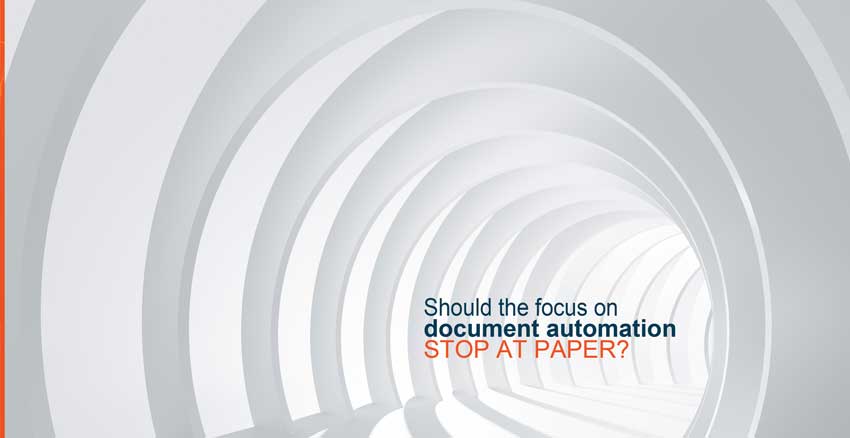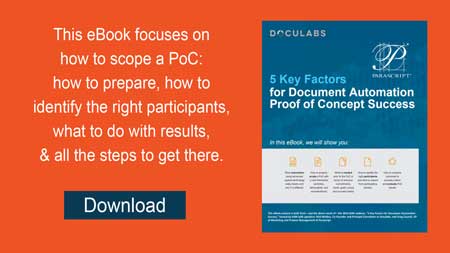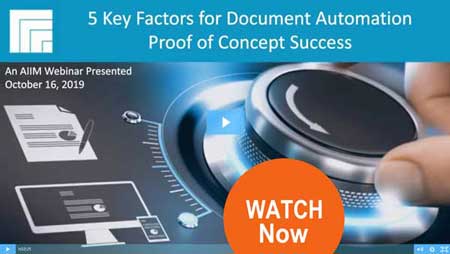A Broader View
In today’s business environment, when looking at document automation, many organizations first look to rid themselves of paper. This predisposition can be forgiven since there are a lot of problems involved with handling paper ranging from the storage costs to the inability to easily share and work on documents within key business processes. We call this “attacking the paper problem.” The progression towards a paperless organization has definitely come a long way. Is this focus on paper short-sighted? Quite possibly.
This is Part 4 in our DX series. Previous articles in this series include: “Prioritizing Document Automation Processes in the DX Journey,” “Digital Transformation & Its Document Automation Challenge” and “What It Means to be Digitally Transformed.”
Digital Transformation Strategy Development
While it’s easy to fixate on the paper-based processes in our environment, limiting the scope of a digital transformation project to only tackling paper will end-up neglecting the processes where paper is completely eliminated, but where documents still very much exist. Most invoices today actually never originated as paper.
This is also true of other transactional documents such as a mortgage application, an explanation of benefits document or a bill of lading. Few contracts originate on a typed or handwritten piece of paper. These documents and the information within them are typically created and managed from within line-of-business systems. Most often, the only reason to create documents is in order to share them with a business partner.
Broader DX Scope Encompassing the Born-Digital
Increasingly, documents like these are born-digital from enterprise applications. This fact creates a risk for those organizations focused on paper.
Focus on paper means that the project teams might be too fixated on dealing with image-based problems instead of data-oriented problems. If a process deals with 100,000 documents per month, but 90% of them are digital, then focusing on the 10% that are paper may not be prudent. Dealing with paper-oriented problems can be delayed. The vast majority of these documents do not need any image-oriented processing such as image perfection or OCR/ICR.
Focusing on Data Interpretation
This is good news since converting a paper document into a digital format introduces all sorts of complexity and potential for error. The attention to automation can skip these processes entirely to focus on the much more complex tasks of interpreting the information contained in these documents to classify, organize, and locate and extract specific data into a structured format.
It’s time to rethink documents – only a small percentage are still the paper variety. But they all can use a bit more automation.
###
If you found this article interesting, you might find this eBook and webinar useful focused on how to develop a successful proof of concept project to evaluate and select the right technology for your document automation.



